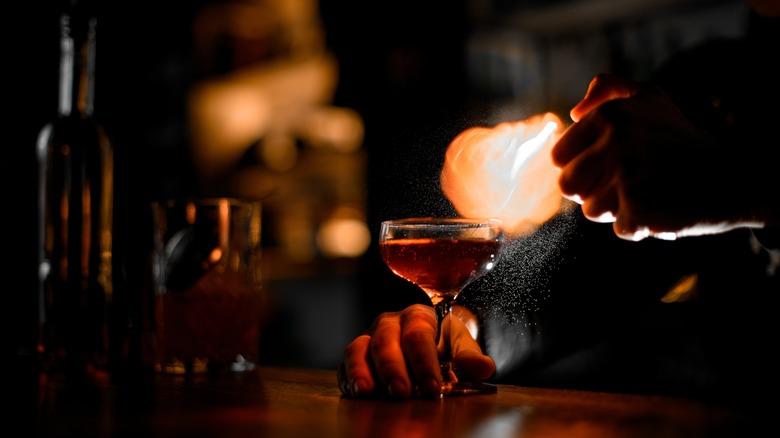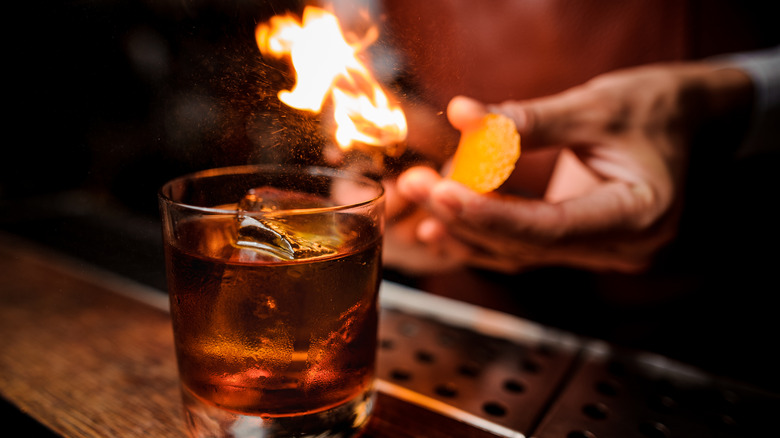How Exactly Do Flaming Cocktails Work?
Presentation is a major aspect of serving cocktails. Glass shapes and sizes, garnishes, and ice shapes have become increasingly used in mixology, but one visual aspect of cocktails is both tricky and impressive to pull off: Flaming cocktails. These create a daring spectacle when served, but in reality, what makes it happen is quite simple: Alcoholic vapors from the drink become inflamed, giving the illusion of the drink burning.
Mixed drinks are universally loved. From Italian cocktails to celebrity chefs' favorite cocktails, they're commonly consumed by cultures worldwide, and some countries are even known for certain cocktails that cannot be found elsewhere. In a flaming cocktail, the alcohol gives off vapors which rise upward, off the drink, where they can then be ignited. These work slightly differently, based on the type of alcohol used. Higher proof alcohol evaporates faster, so it tends to give off more vapor, which affects the size of the flames.
Creating flaming cocktails: the science behind it
For bartenders, flaming cocktails present an interesting challenge. Typically, flaming cocktails need to have the higher proof alcohol toward the top of the drink. If not properly prepared, the flames won't be as effective or impressive. Other than the visual spectacle, lighting a cocktail on fire can have other effects too. Depending on the drink, igniting the vapors can give it more of a vanilla or smoky flavor. In some cases, it can even help caramelize sugars in the alcohol.
Another strange thing about flaming cocktails is that the longer the flame is allowed to burn, the less there actually is to drink in the cocktail itself. This is because of the vapors, which are a result of the alcohol evaporating. The longer the flame burns, the more the alcohol evaporates. As for how the drink tastes, the flame will make the drink somewhat warmer, but not hot. It's possible for the flame to have an effect on flavor, but typically the result is quite subtle.

